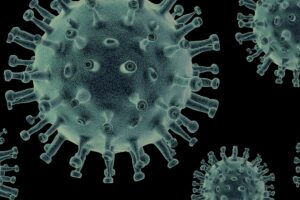
The Centers for Disease Control and Prevention (CDC) has confirmed that bird flu, which has spread to affect farm animals and some dairy products, has now infected two humans.
The first case was reported in Texas, and the latest in Michigan, involving people who worked on dairy farms where cows had contracted the virus.
According to the CDC, an initial nasal swab from the Michigan farm worker tested negative, but an eye test sent to the agency was positive. This worker experienced only mild eye symptoms consistent with pink eye and has since recovered, similar to the first patient in Texas.
What are the risks?
The U.S. Agriculture Department has implemented measures to prevent the virus’s transmission, such as testing all dairy cattle for bird flu before interstate travel.
The Food and Drug Administration (FDA) and the CDC are also investigating these outbreaks to ensure public safety. Despite the two human cases, the CDC states that the risk remains low.
However, as a precaution, Michigan health officials recommend that all farmworkers receive the seasonal flu vaccine to help protect against co-infection with bird flu. For those who do not regularly interact with animals, the CDC has provided the following tips to prevent infection:
- Avoid exposure to sick or dead animals, including poultry, domesticated birds, wild birds, cows, and other animals.
- Avoid contact with raw milk, raw cheese, animal faeces, litter, or anything contaminated by an animal with bird flu.
- Wear personal protective equipment when in direct or close contact with sick or dead animals.
Dr. Natasha Bagdasarian, the state’s chief medical executive, said: “Michigan has led a swift public health response, and we have been tracking this situation closely since influenza A (H5N1) was detected in poultry and dairy herds in Michigan.
Farmworkers who have been exposed to impacted animals have been asked to report even mild symptoms, and testing for the virus has been made available. The current health risk to the general public remains low.
This virus is being closely monitored, and we have not seen signs of sustained human-to-human transmission at this point. This is exactly how public health is meant to work, in early detection and monitoring of new and emerging illnesses.”



